
How do we bridge this gap?
by Archana Datta / 02 December 2020India has the highest gender digital divide with only 21 per cent of women being mobile internet users, while the number stood at 42 per cent for men
The recent suicide of a girl from a reputed women’s college in Delhi created a stir. A student of B.Sc Mathematics (H), Aishwarya Reddy was distraught over the lack of a stable home internet connection, a functioning mobile phone and a laptop. While reaching out to an actor for financial help, Reddy rued, “Due to online classes, it became extremely important to study...on a laptop. There is no way to buy a laptop as our family is completely in debt.” Earlier, a students’ union survey in her college found that 30 per cent of the students did not have a laptop and 40 per cent lacked a proper internet connection. A scholarship management portal that interviewed 10,000 students aged 12-28 years across India, from families with an annual income below `7 lakh, reported that only 17 per cent had access to a laptop, four per cent to a tablet and for the rest 79 per cent, smartphones were the primary mode for online learning. A poor internet connection was the biggest challenge for 57 per cent. Meera Desai, Professor, SNDT Women’s University, Mumbai, says, “About 30 per cent students are facing issues in terms of owning or using a device. Plus there are mobile data issues.” According to a media report, only eight per cent of all households, with members between five and 24 years, have both, a computer and an internet connection. As the pandemic struck, the World Bank warned about a learning crisis, “long-term losses in human capital and diminished economic opportunities.” The UNESCO voiced concerns about the adverse impact on human rights of over 60 per cent of the world’s students. To keep the education system running, the world moved on to a digital mode but this brought to the surface many long-standing issues with regard to access and affordability. In the case of India, the “pandemic arrived before it got on board the information superhighway, which became a vivid marker of the digital divide as only a third of the population managed to avail the facilities of online learning,” says Meeta Sengupta, an educationist and Salzburg Fellow. India already has a huge digital divide with only 23.8 per cent households having access to the internet. While in urban areas it is 42 per cent, in rural areas it dips to 14.9 per cent.
With prolonged school closure, India, with a network of 1.5 million schools and an estimated 320 million learners, is struggling with e-learning. A NCERT study says that at least “27 per cent of students lack access to smartphones or laptops to attend online classes…and teachers were also found wanting in skills for online teaching.” A study by the Azim Premji Foundation on the public school system in 26 districts in Chhattisgarh, Madhya Pradesh, Rajasthan, Karnataka and Uttarakhand, too, disclosed the frustration of teachers with the digital method of learning because of the “impossibility in establishing any emotional connect with children or making any meaningful assessment of their learning outcomes.” Sengupta fears that “since our education system puts so much pressure on pace and limits opportunities by age, those left behind would never be able to catch up… lack of empathy in times of crisis would hurt the poorest students the most.” India already had 32 million out-of-school children before the pandemic. Unfortunately, the draft education policy, while encouraging e-learning platforms, is silent on the issues of equity or quality.
The gender digital divide (GDD) has been further amplified by digitisation of education, says UNESCO. India has the highest GDD with only 21 per cent of women being mobile internet users, while the number stood at 42 per cent for men. A recent ground situation analysis from 10 Government schools in Patna and Muzaffarpur districts in Bihar found that more boys (36 per cent) than girls (28 per cent) have access to smartphones. In the case of girls whose families had phones, the device was almost always with a male member and they couldn’t use it either for online classes or for receiving calls from the school mentor. While a study among 3,000 marginalised families in Uttar Pradesh (UP), Bihar, Assam, Telangana and Delhi says that 70 per cent didn’t have enough food and “though the pandemic had negative impacts on schoolgoing boys and girls, yet the latter faced an additional impact and long-term consequences. About 37 per cent of the girls were uncertain about their return to school.” Rahul Goswami, CEO and co-founder, Lakshya Jeevan Jagriti, a Delhi-based NGO, which works among slum dwellers, laments that, “whatever gains had been made through the counselling of underprivileged families for educating their daughters, have come to nought. Even though online classes are going on, many girls have been forced out of the system due to the lack of devices, connectivity or emotional support.” More often, girl students are pushed into care work. “This was the case during the pandemic, too. As their studies are still not considered a priority, resources are always gendered and patriarchy-controlled,” laments Desai. “Institutions and the power structures of the State failed to take responsibility of the students’ distress. The education sector has not even been recognised as an essential service,” she adds.
Undoubtedly, Reddy’s untimely death has exposed a huge systemic gap which failed to notice the digital deprivation, economic and emotional vulnerabilities of students, especially girls. Now, many educational institutions and alumni associations are coming up with plans for financial support and scholarships. Under ‘Digital India’, a plan is also afoot to give free laptops, PCs, mobiles to four crore students by 2025-26. Let us hope that Reddy’s tragic story is not repeated in ‘Digital India’, which is based on the motto of “power to empower.”
(The writer is a retired IIS officer, and a media educator)
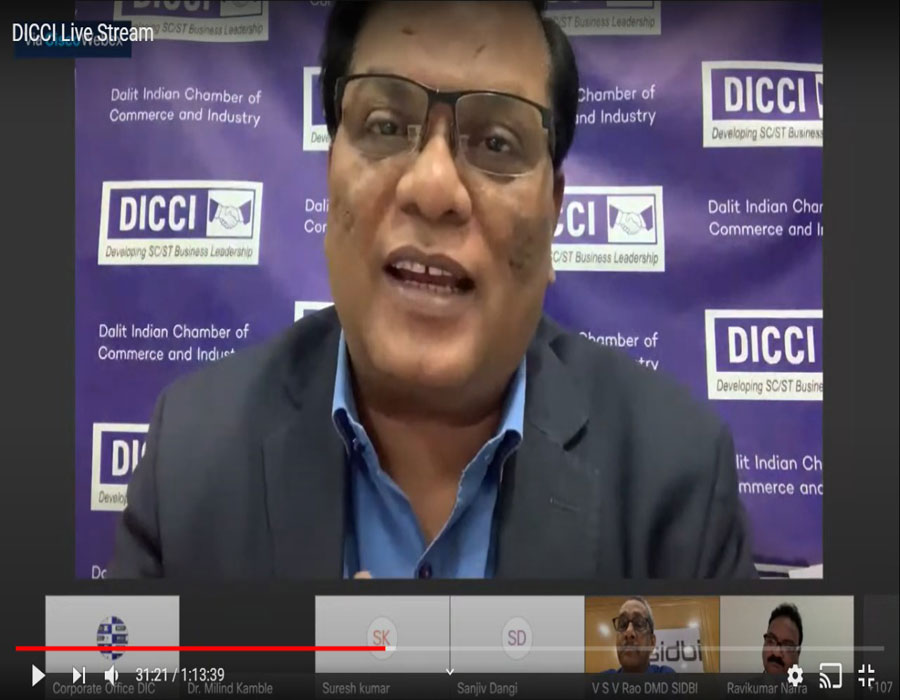
SIDBI & DICCI LAUNCH ONLINE ‘SWAVALAMBAN SANKALP MEGA CAMPAIGN’ FOR STAND-UP INDIA
by Opinion Express / 30 November 2020- Webinar series is launched by SIDBI & DICCI to give fillip to STAND UP INDIA scheme.
- Opportunities for SC-ST entrepreneurs to choose from various Plug-and-Play business models.
Small Industries Development Bank of India (SIDBI), the apex financial institution engaged in the promotion, financing and development of Micro, Small & Medium Enterprises (MSMEs), along-with Dalit Indian Chamber of Commerce and Industry (DICCI), an industry chamber that promotes business entrepreneurship amongst Scheduled Castes (SC) and Scheduled Tribes (ST), launched a webinar series - ‘SWAVALAMBAN SANKALP – MEGA
CAMPAIGN’, an initiative to boost Government of India’s flagship Stand-Up India (SUI) scheme.
Dr. Milind Kamble, Founder-Chairman – DICCI, shared that DICCI intends to connect with potential aspiring SC-ST entrepreneurs who need appropriate guidance. “Our Prime Minister’s vision through Stand Up India scheme is to empower 1.25 lakh SC-ST entrepreneurs per year through the 1.25 lakh branches of all scheduled commercial banks and help them become Atma-Nirbhar.” He informed that along with Swavalamban Sankalp, DICCI has also started Business Facilitation Centres in all their chapter offices to facilitate existing and aspiring entrepreneurs in availing support from government schemes which are otherwise underutilised. Congratulating DICCI for their exemplary work in its outreach amongst SC-ST communities in every nook and corner of the country and making them aware of the schemes for SC & ST, especially Stand Up India, V. S. V Rao, Deputy Managing Director, SIDBI, the Chief guest of the event said that, “SIDBI had a target of funding 2.5 lakh Stand Up India projects of which 1 lakh is already achieved. India is a land of opportunities, there are people to experiment with. SIDBI will be at the forefront when it comes to entrepreneurial development.” He added.
Ravi Kumar Narra, National Working President – DICCI, informed that since beginning Swavalamban Sankalp has gained tremendous momentum. “Through this mega campaign many success stories have been created and now with this webinar series which shall be held every Friday until March 2021, it shall reach far bigger audience. It will help to connect aspiring entrepreneurs directly with the bankers and franchisors.” Sanjiv Dangi, Former North India President - DICCI, said, “People coming from SC-ST community do not know about the financial assistance available to them from the government. The aim of Swavalamban Sankalp Mega Campaign is to make them aware of the same as well as the newer opportunities through franchisee businesses.”
As an inaugural presentation, Sanjay Gandhi, Business Franchisor for ‘Astore’ shared the opportunities for a multi-brand mobile repair store anywhere in the country. He said that the usage of mobile technology in India is only going to rise continuously and hence there exists a huge prospect in the mobile repair services segment.
‘SWAVALAMBAN SANKALP – MEGA CAMPAIGN’, was initiated a year back to give a boost to “Stand Up India (SUI) Scheme” which is a flagship program of Hon’ble Prime Minister of India. It aimed to step up the effectiveness of the SUI scheme and strengthen the MSME ecosystem targeted at development of unserved/underserved youth and entrepreneurs from Schedule Castes (SC) and Scheduled Tribes (ST). Series of events were organised in various cities to reach out to potential aspirants and many entrepreneurs have been benefited from the initiative. To ensure, the COVID-19 crisis does not become a hinderance to the dreams of young Dalit entrepreneurs, SIDBI & DICCI has launched the webinar series on virtual platform.
As part of Swavalamban Sankalp Mega Campaign, DICCI in association with SIDBI will stream a success story every Friday at 4 PM on their website and social media channels.
To know more please contact Mr. Manjul Kumar, +91 89294 96170, info@dicci.in.
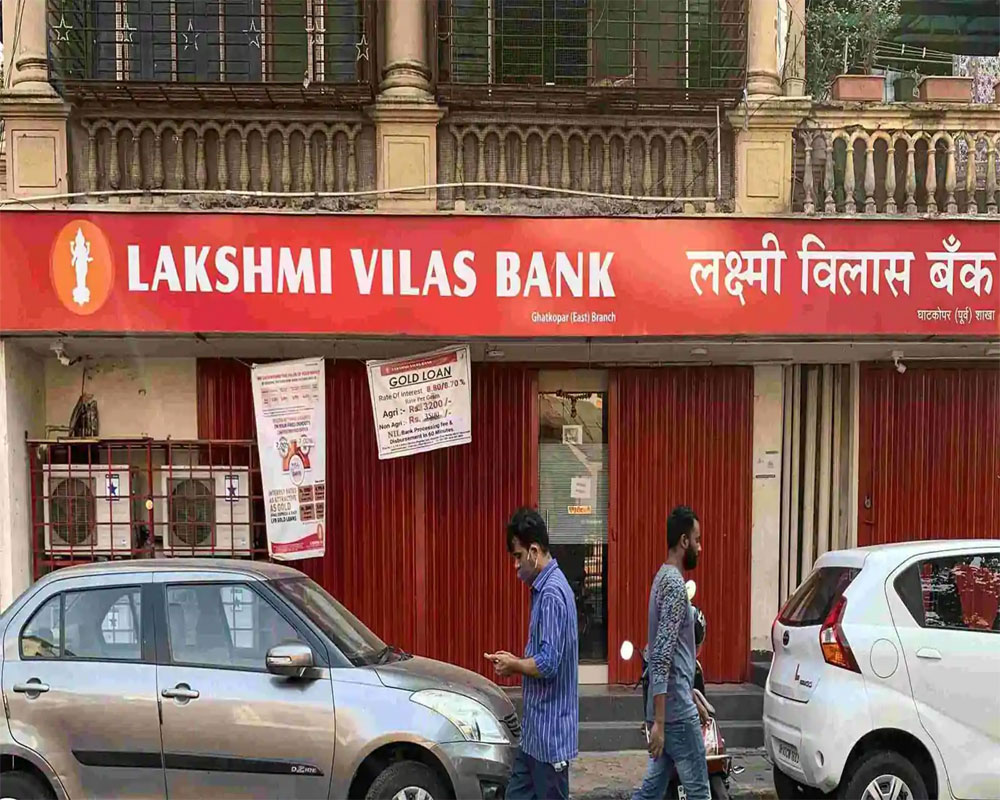
Amalgamation of LVB with DBS Bank completed, Rs 2,500 cr fund injection soon
by IANS / 30 November 2020Lakshmi Vilas Bank (LVB) is now amalgamated with DBS Bank India Limited (DBIL), the wholly owned subsidiary of Singapore-based DBS Group Holdings Ltd.
In a statement on Monday, DBS Bank said that the scheme of amalgamation is under the special powers of the Government of India and Reserve Bank of India under Section 45 of the Banking Regulation Act, 1949, India, and has come into effect on 27 November, 2020.
It added that the amalgamation provides stability and better prospects to LVB's depositors, customers and employees following a period of uncertainty. The moratorium imposed on LVB was lifted from November 27, 2020 and banking services were restored immediately with all branches, digital channels and ATMs functioning as usual.
LVB customers can continue to access all banking services. The interest rates on savings bank accounts and fixed deposits are governed by the rates offered by the erstwhile LVB till further notice. All LVB employees will continue in service and are now employees of DBIL on the same terms and conditions of service as under LVB.
The DBS team is working closely with LVB colleagues to integrate LVB's systems and network into DBS over the coming months, the statement said.
Once the integration is complete, customers will be able to access a wider range of products and services, including access to the full suite of DBS digital banking services which have won multiple global accolades, it added.
Moreover, the bank asserted that it is well-capitalised and its capital adequacy ratios (CAR) will remain above regulatory requirements even after the amalgamation.
Additionally, the DBS Group will inject Rs 2,500 crore into DBIL to support the amalgamation and for future growth. This will be fully funded from DBS Group's existing resources.
DBS has been in India since 1994 and converted its India operations to a wholly owned subsidiary (DBIL) in March 2019.
Surojit Shome, CEO of DBS Bank India Limited, said, "The amalgamation of LVB has enabled us to provide stability to LVB's depositors and employees. It also gives us access to a larger set of customers and cities where we do not currently have a presence. We look forward to working with our new colleagues towards being a strong banking partner to LVB's clients."

Teleporting racing game ‘Warp Drive' arrives on Apple Arcade
by IANS / 30 November 2020Apple has introduced a new game 'Warp Drive' from UK-based independent developer Supergonk in its growing catalogue of titles on its Cloud gaming service Arcade.
'Warp Drive' differentiates itself from other racers by allowing players to teleport around the track to find shortcuts and hidden routes.
Further, the game features dynamically generated tournaments to offer a different experience each time.
"Compete in a series of dynamically generated tournaments, with random options providing a different experience every time you play, upgrade your car between races, gradually adding more capabilities to drift, boost, or warp your way to victory," the company said in a statement.
Arcade recently added two new games Reigns: Beyond from Devolver Digital and All of You from Alike Studio.
The subscription gaming service costs Rs 99 a month and lets people play more than 120 games across the iPhone, iPad, Mac, iPod Touch and Apple TV.
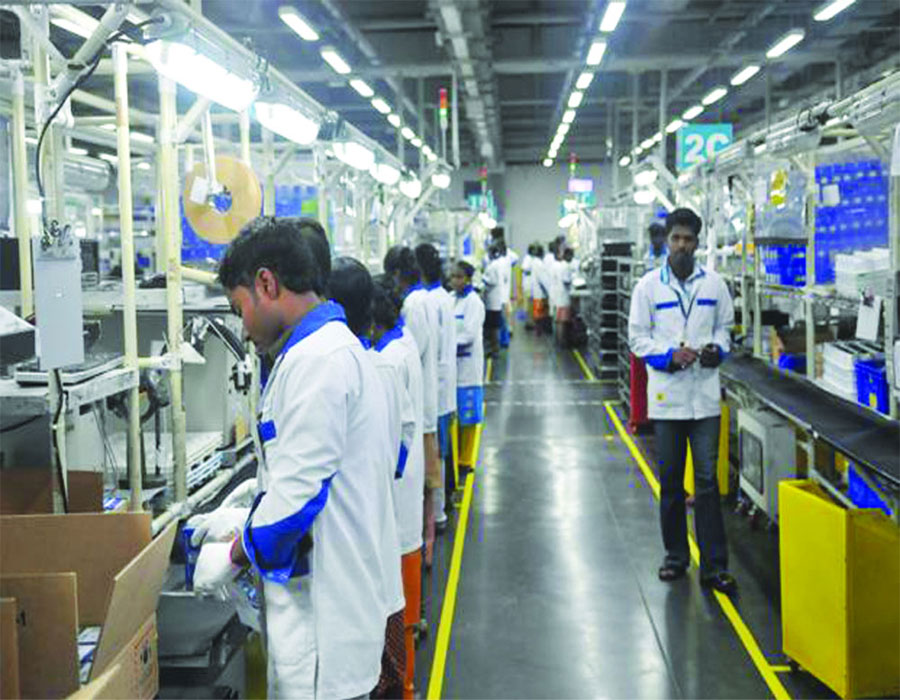
A DBT for manufacturers
by Subhash Chandra Pandey / 30 November 2020The PLI scheme is result-oriented. The cash incentives will be paid only if the manufacturers make the goods. It is a better alternative
The Central Government has approved production-linked incentives (PLI) for manufacturers in 13 sectors. It essentially means that if an eligible manufacturer produces and sells/exports eligible goods worth Rs 100 crore, the Government will give him Rs 5 crore (assuming five per cent incentive) as a reward/incentive because such sale/export of locally manufactured goods will create local jobs.
The PLI will be available for sale/export for the next five years in addition to the existing incentives. Now this is one of the concerns that remains for investors and would need to be addressed to make the scheme a success. As the PLI benefit has been assured only for five years, the investor has to assess the financial viability of the project beyond the PLI period. Once a manufacturing unit has been set up with a lot of fixed investment, recovery may be difficult. So the five-year period has to be utilised to make life easy for all businesses and job creators. In other words, the “ease of doing business” has to improve substantially.
The Government expects that it may be called upon to pay about Rs 2 lakh crore, which means a total sale/export of about Rs 40 lakh crore (assuming five per cent PLI rate) during the next five years. This PLI will increase local manufacturing of eligible goods by an output equal to about 20 per cent of the current GDP.
Thus, the second concern is changing growth dynamics and the global demand scenario, especially in the post-pandemic world. To get free cash of Rs 2 lakh crore from the Government, specified goods worth about Rs 40 lakh crore would need to be produced in India and a matching demand would be needed in a world where the cut-throat competition is going to deepen.
The third concern is about how much of the PLI benefit would boost the investor’s actual post-tax income. In October, the Ministry of Electronics and Information Technology (MEITY) approved PLI benefits (four per cent to six per cent) to 16 companies. The PLI is available for incremental sales of goods manufactured in India five years subsequent to the base year (FY 2019-20).
Now, whether the incentive of four per cent to six per cent of invoiced price for five years would be enough compensation to offset the cost disadvantage in India remains to be seen. One plus point in favour of the new manufacturing units is 15 per cent corporation tax that was announced last year. For them, manufacturers of highly branded products like Apple iPhones, the PLI scheme and reduced corporate tax are major incentives. Since such manufacturers face little competition for their products, they can set prices of their products on their own. The PLI benefit may or may not be fully passed on to the retail buyers in this particular case.
Most other manufacturers may face stiff price competition and may not be able to fully pocket the PLI benefit to offset their cost disadvantage. Their discerning, hard-bargaining buyers will demand price discounts on the basis of the PLI benefit.
The percentage of PLI benefit may vary across beneficiaries and depending on the competition, the post-tax actual benefit could vary from investor to investor. The PLI scheme, therefore, needs supplementation by sustained investor facilitation and improvement in ease of doing business.
Incentives like income tax and Central excise exemptions, VAT/GST reimbursements, interest and insurance subsidies, subsidies on plant/machinery and so on are typically provided for industries set up in industrially-backward areas like North-eastern states.
At present, the total manufacturing output of all items (whether PLI eligible or not) in a year is about 16 per cent of the GDP. The services sector has a 55 to 60 per cent contribution in GDP and has been a major employer so far.
The PLI will be available to all new manufacturing units and also to existing manufacturing units for their extra production, additional over baseline output. For example, existing mobiles and electronics manufacturers are entitled to PLI benefit for whatever they produce over and above the 2019-20 level production in the next five years. The manufacturing units will have to apply, register and go through a vetting process and enter into proper agreement with the Government so as to ensure that only eligible manufacturers get the incentive for actual local manufacturing.
On April 1, a PLI scheme promising Rs 40,951 crore incentive (four to six per cent of production value) was notified for manufacturers of mobile phones and other electronic components. Medical devices and bulk drugs (active pharmaceutical ingredients) were added to PLI eligibility in July and on November 11, 10 more manufacturing sub-sectors were added.
Thus, Rs 1,97,291 crore of cash incentive has been promised in the next five years to manufacturers of automobiles and auto components (Rs 57,042 crore); mobile manufacturing and specified electronics/technology products (Rs 45,951 crore); advance chemistry cell batteries (Rs 18,100 crore); pharmaceuticals and drugs (Rs 21, 940 crore); medical devices (Rs 3,420 crore); telecom and networking products (Rs 12,195 crore); processed food (Rs 10,900 crore); man-made fibres and technical textiles (Rs 10,683 crore); high-efficiency solar PV modules (Rs 4,500 crore); white goods like ACs and LEDs (Rs 6,238 crore) and speciality steel (Rs 6,322 crore).
For its move in October to approve grant of PLI benefit (four to six per cent ) to 16 companies, MEITY received a very good response from mobile handset manufacturers.
The production of mobile phones surged from about Rs 18,900 crore in 2014-15 to Rs 170,000 crore in 2018-19. Samsung, Foxconn Hon Hai, Rising Star, Wistron and Pegatron have been granted PLI benefit only for manufacturing high-end phones (invoice value Rs 15,000 and above).
Foxconn Hon Hai, Wistron and Pegatron are contract manufacturers for Apple iPhones. They expect to have a major export turnover for high-end phones. Some Indian mobile phone companies, including Lava, Bhagwati (Micromax), Padget Electronics, UTL Neolyncs and Optiemus Electronics, have also been approved for PLI.
This scheme aims to make India a manufacturing hub of global repute, reduce imports and generate employment. It covers both low-value and high-employment items like textiles and food as well as high-value and low-employment items like automobiles, mobiles, electronics, white goods, including high technology items like Advanced Chemical cell battery. Incentivising local manufacture of items like ACC battery, auto and electronics components will help India become part of the global value chains. The automobile industry turnover already accounts for almost half of the total value of manufactured items.
The auto, electronics and pharma industries, which have substantial import dependence and also high export potential, are major beneficiaries of the scheme while textiles and processed food are major employment generators.
A pertinent question is why should the Government give financial assistance of Rs 900 to a phone manufacturing company for every phone sold at Rs 15,000 (assuming six per cent PLI)? After all, more than half of the value of a phone may comprise imported components. The answer to this question is local employment.
The exports, in any case, are tax-free. Under the WTO rules, a Government can refund all taxes collected from exports so that the local taxes are not exported to foreign buyers. So, whatever Customs, excise duties and GST are paid on exported items, they are eventually refunded by the Government. Often, exporters face the problem of working capital if the refund is delayed.
There is a growing demand in the world for diversification in supply chains and India can become a major player. The promotion of the manufacturing sector means forward integration with global supply chains and backward linkages with the MSME sector.
The domestic electronics hardware manufacturing faces a lack of a level-playing field vis-à-vis competing nations. It is assessed that it costs about 8.5 per cent to 11 per cent more to manufacture these items in India on account of lack of adequate infrastructure, domestic supply chain and logistics; high cost of finance; inadequate availability of quality power; limited design capabilities and focus on R and D by the industry; and inadequate skill development. Sunrise sectors need support in the initial stages.
Traditionally, we have tried to attract investors with investment subsidies like giving land at concessional rates and subsidy on plant and machinery cost at a fixed percentage of say 15 per cent to 20 per cent of price. Thereafter, if the unit does not properly run, the subsidy goes waste. The PLI scheme is result-oriented. The cash incentives will be paid only if the manufacturers make the goods. It is a better alternative from the Government’s viewpoint.
(The author is former Special Secretary, Ministry of Commerce and Industry)

A different ball game altogether
by Hima Bindu Kota / 26 November 2020It is crucial to understand the financial behaviour and practices of SMEs which are totally separate from those of larger firms
Although capital is a scarce resource for any business, it is even more scant for small and medium enterprises (SMEs). Therefore, cash flow and working capital management are the most crucial challenges of organisations in general and SMEs in particular. Working capital is short-term in nature and refers to the funds required for the daily functioning of a firm. In business parlance it consists of accounts receivables (debtors and any pre-payments, stock or inventory) and accounts payable (creditors and short-term provisions). The lifeline of any enterprise is the flow of cash and other liquid assets through a business cycle — a journey of collecting receivables from the debtors to pay off the creditors. This is also known as the cash conversion cycle. The efficiency and, therefore, the success of a business depends upon how fast the goods are converted into cash.
SMEs differ in many ways from large firms in terms of their financial behaviour and decision-making, mainly because of their characteristics and ownership. This ultimately reflects in their financial habits. So, what are the factors that affect the availability of capital to small enterprises? One of the most important issues is the size. According to researchers, during the start-up phase, the owner’s personal savings are an important source of funds. Young and small firms do not have an established track record and may be characterised by informational opacity, making banks and other financial institutions reluctant to lend to them. In general, firms which are less than four years old, rely more on informal sources of funding.
However, when the SMEs increase in size and become larger, they have a greater network of banks willing to fund their business. The firm’s ability to deal with multiple banks and other credit agencies generally grows with size, too. So, they rely more on long-term debt and external financing, including bank loans.
Second, the type of ownership is another important determinant for the source of funding. Any SME with a concentrated ownership, like in a proprietorship, should be more prepared to use bootstrap financing, as it would have greater difficulty in accessing a formal source of credit. From the lender’s perspective, in such SMEs, there is no clear distinction between the owner and the firm, information asymmetry is prevalent and an ability to provide collateral is missing. On the other hand, a private limited SME may be viewed by financing agencies as more structured and credible. As a result, formal financing options are freely available to it. Third, the location of the start-up makes a huge impact. A firm’s proximity to the banks has an influence on its ability to gain external funding. Research also suggests that one of the reasons for a company’s failure is poor location that prevents customers and suppliers from reaching it. Therefore, despite high rentals, SMEs prefer to move to urban areas for the sake of better infrastructure and the ease of raising external finance.
Fourth, several researchers have provided evidence that the sector where the SME is operating has an impact on the short and long-term debt available to it. For example, short-term credit is used more in wholesale and retail trade as compared to manufacturing SMEs. Whereas the construction sector, hotel, hospitality and mining industries appear to depend more on long-term finance. And finally, availability of assets plays an important role in raising funds. From a lender’s point of view, collateral, which is also known as the lender’s second line of defence, is highly relevant while approving loans. Researchers Ono and Uesugi studied the Japanese SME loan market and found a positive relationship between the use of collateral and the ease of access to bank loans and external financing. It can also be understood that firms with lower tangible assets would face difficulties in accessing funds.
Additionally, the characteristics and gender of the owner too influence a firm’s capability to raise external funding. According to several researchers in different countries, men and women differ in the way they raise cash for their businesses. There is empirical evidence that women entrepreneurs start their business with a smaller start-up capital, in fact less than half of the amount used by men. In addition, women also face discrimination from banks and other financial institutions. This is evident from the higher rates of interest charged from women entrepreneurs, the requirement of additional collateral, higher loan denial rate and so on. The age of the owner, too, impacts the personal financing preference. Older SME owners are less likely to take additional finance into their firms. Younger owners tend to use a variety of external cash sources like loans, overdrafts, credit cards and personal savings.
SMEs are the backbone of any growing economy. Therefore, it is crucial to understand their financial behaviour and practices which are very different from the financial management of large corporations. This would help policymakers come up with ways to improve the external financing scenario for such firms, as stronger SMEs make a stronger economy.
(The writer is Associate Professor, Amity University, Noida)

Beating Twitter?
by Opinion Express / 26 November 2020While the makers of Tooter are hoping that a home-grown social network can take off, that bird has long flown
This is not the first time a new social network has popped up to take on the might of Twitter. A few months ago another network called Mastodon created a buzz and while many, particularly those of a certain liberal persuasion, populated the site, sadly its fate wasn’t very different from the animal it was named after. The latest site to float up on your device is called Tooter, which is really just a rebadged version of the social network called Gab in the United States (US). While its makers claim it to be Indian or swadeshi, it turned out that even the “Terms Of Service” were copied almost verbatim from the American service. Without disparaging the efforts of those trying to create a new service, it would be good if Indian software engineers could create a new social network, one that integrates the best of the others and adds features, rather than blithely copying another product. On this front, India would be well served to learn from the Chinese internet experience.
That said, can Twitter or Facebook ever be replaced? There is an argument that says yes, given their monolithic power now as opinion makers themselves. Twitter has, in particular, played a dubious role in restricting access to certain information during the US election, or so the losing candidate, President Donald Trump, alleges. Then again, one could argue that without Twitter, Trump’s popularity would never have soared. It is important that services like Facebook and Twitter, which are transnational, should come under some sort of regulatory mechanism and should not become some extra-constitutional force in nations like India. That said, the arguments for free speech and misinformation make for a dubious grey area and territories have to be clearly demarcated by the Government of the day. Also, a lot of the lamenting about Twitter being right or wrong for one side or another disguises the fact that it is what it is because of such issues and cannot be equal to the electorate. Much of what goes on in social media is happening at a level that the elite, on either side, have little or no idea about, on messaging applications like WhatsApp. Yes, social networks should be subjected to Indian regulations and it may not be a bad idea to create an Indian social network, but clearly, Tooter, like Mastodon, isn’t the answer.

Bengal’s revival
by Prafull Goradia / 26 November 2020It is possible to make a quick start in reviving the State’s economy without large investments but through governmental will and management
If I were still a resident of West Bengal, my first priority in the coming Assembly elections would be to retain the identity of our State. It should not in any way get compromised by Bangladesh or its concerns. We need to recall that on the eve of the Partition of 1947, Sir Abdul Rahim and the popular peasant leader, Fazlur Rahman, had come to Calcutta to convince Netaji’s brother Sarat Bose that a united Bengal should be the third dominion besides Hindustan and Pakistan. The Communist Party then began to support the idea of an undivided Bengal. Qaid-e-Azam Jinnah also backed it because a Muslim-dominated Bengal would willy nilly side with Pakistan rather than India.
When it comes to song, music, language and literature, all Bengalis take pride in them. But when it comes to memories, most Bangladeshis would recall their social oppression at the hands of the zamindars and their camp followers. Many remember that even when they were invited to dinner at wedding celebrations, they would be asked to sit separately and after meals were expected to clear their clay thalis. This hierarchical rift ran so deep that a united Bengal would eventually be torn from within. In conversation a few years ago with some acquaintances from Dhaka, I was surprised to find that they resented how East Bengal was not given Calcutta during the Partition, although the city was, as it were, a stone’s throw from Jessore. They believed it was unfair of the British to change the allocation at the last minute, and while conceding Lahore to Pakistan, they had done grave injustice to them. Calcutta was sought after because it was an economic hub and a port city; it supplied all the raw jute and the merchant princes of Kolkata reaped the benefit of jute mills and many other industries.
Mohammad Ali Jinnah was anxious to acquire Calcutta and the impression was that he was a capable negotiator. But obviously, he lost out, perhaps because his lungs were failing and his heart was set on getting Pakistan. The interests of East Bengal had a lower priority for him. Incidentally, the Qaid had never visited East Bengal until February 1948. The only so-called industry given to it was the Sylhet district, which was rich in tea gardens. Bangladesh has very few economic means, other than subsistence resources, such as rice and fish. That is why, it needs to follow the Japanese model of importing raw materials from overseas and converting them into products with high technology for export. It is difficult for any people to have such techno-entrepreneurial genius as the Japanese. The legend of Sonar Bangla is now threatened because six of the western districts no longer receive the rainfall of yesteryears and they badly need river water from India. The other misfortune is that most of the land is low-lying and the sea level is rising. According to scientists, in two decades’ time, 17 per cent of Bangladesh’s land area is expected to be submerged. All these factors make Bangladeshis the highest number of migrants to other parts of the world. But West Bengal has borne the brunt of this influx.
My heart throbbed with delight when a few years ago, Mamata Banerjee, with all the fury at her command, threw a sheaf of papers on the Lok Sabha Speaker’s table. She was then demanding an infiltrator-free West Bengal. The State has limited land and plentiful people and its resources have undoubtedly been stretched over the years, the refugees bulging that burden. Then the many industries — small, medium and heavy — that the State was proud of rapidly turned into industrial graveyards thanks to trade unions and poor management in years past.
Bengalis are a gifted people and certainly intelligent right down to the illiterate. If for nothing else, for their talent, the State deserves a better economy. A revival is overdue and it should soon set a new economic agenda. Setting up a new industry is like creating a brand, which would have to compete in this age of globalisation. On the other hand, education is a sphere in which Bengal enjoys a natural advantage as well as reputation. The first major thrust should be in the field of schools, colleges and universities. There is scope for developing a big knowledge economy because the catchment area can sweep UP, Bihar, Nepal, Assam and the Northeast, as well as Bangladesh. None of these regions is able to provide young people with quality education.
I would begin with medical studies. With efficient management and capable doctors, as many hospitals as possible across the State could be improved by deploying professional managers supported by medicos. Let the doctors do their own specialised work. Management and medicine/surgery should not be mixed up. Thereafter, medical colleges along with as many hospitals as possible could be set up. The significant investment would largely be in creating medical colleges. The World Bank could lend the money since the Government could guarantee the loans. There should be an option, wherever possible, for expanding the hospital and adding another college, considering the best of technology is already available in India.
There is a crying need not for ordinary schools but for excellent ones with hostel facilities. The New Education Policy (NEP) should be used as the lodestar for these schools to come up in the private sector with improved facilities. The land could be allotted by the State or there could be private-public partnerships. A similar strategy should be followed for colleges and universities. This would restore Bengal’s pride as the seat of intellect.
Next, the Government should attend to sub-Himalayan West Bengal. There is space for a splendid international airport in and around Bagdogra, which is near the town of Siliguri. This is the place for proceeding to either Darjeeling, Kalimpong or Gangtok in Sikkim. The most glorious mountains in the world form the backdrop of these hill stations. Darjeeling is at 6,000 ft, and another 6,000 ft above that is Sandakphu, which is motorable, too, and from where one can view the Everest on a clear day. World class hotel groups and enterprising airlines could be lured with promises of support, a stable law and order situation and assurance that any obstacles in their path would be removed. Himalayan Bengal would become a brand in itself for Nature has indeed done its best to give North Bengal an unparalleled beauty. It is, therefore, possible to make a quick start in reviving the economy of West Bengal without undue large investments but with governmental will and excellence of management.
(The writer is a well-known columnist and an author. Views expressed are personal)
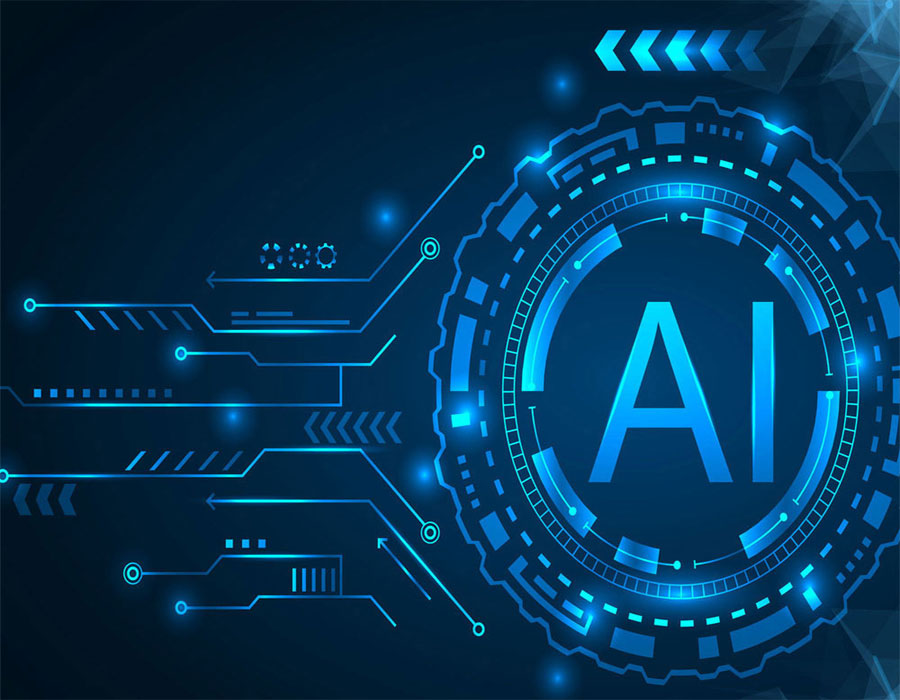
Time to board the algo-trading bus
by Gaurav Garg / 25 November 2020AI’s modus operandi involves mining the relevant stock data, performing the required and appropriate analysis and making a quick decision
Artificial Intelligence (AI) is revolutionising every aspect of our lives, right from chatbots on websites to applications in defence systems. It is also being comprehensively used in the field of analytics. Trading, i.e. buying and selling of shares, is no exception to it too and over the years, AI has gradually become an integral part of the trading environment. Financial markets are so dynamic that it is sometimes difficult to take proper decisions on particular stocks as there are many factors to consider and the decision to buy or sell must be taken on a split second basis. Emotions are the biggest enemy of the trader in the market but it becomes very difficult to control them. This is where AI plays a major role in helping traders. AI is a programme to which we provide algorithms. An algorithm is a set of instructions using which AI learns and understands its role and executes the required functions. The advent of Information Technology has disrupted many activities and now many advanced methods are available, which have made trading an easy process for the public at large with required tools at its disposal.
The use of AI in trading is generally known as algo-trading because the AI programme receives the algorithm, using which it helps investors trade. These empower AI with complex mathematical models and techniques to take proper decisions regarding the optimal quantity of stocks to buy and decide the price for execution. This removes emotions from the scene and effectively processes various factors at the same time in order to make an appropriate decision. Another important aspect which works in favour of algo-trading is that the reaction time is extremely fast as compared to humans and decisions can be made in a wink. With the advent of tools like neural networks, algo-trading has become refined and more efficient as it continuously learns from the environment. This Machine Learning (ML) is what makes algo-systems quite reliable.
Automation of trading activities is very beneficial as the strategies are scientific, and being rule-based, the approaches are very disciplined. Hence, AI has proved to be a very good monitor of the stock markets with a quick response to any anomaly or change. This is very useful when there are a number of asset classes or scrips and keeping an eye on them continuously is not possible for one person to do efficiently. As opposed to this, AI has the ability to process a humongous amount of historical stock data, analyse the market behaviour and capitalise on any particular pattern or expected movement, such as price action. This has also led to the elimination of a lag between the action in the market and a trader’s reaction to it, basically making trading real-time. In many cases this has bestowed people using neural networks with an added advantage over their competitors and traders who are still using manual methods.
However, AI and ML need not be used for developing trading strategies alone and can be used for many other purposes like liquidity searching, creating model portfolios for the clients and so on. The traditional technical analysis, which is known to traders at large, sometimes fails to catch the statistical elements in the markets as this can only be identified after considerable examination. But AI can help overcome this problem as it can eliminate confirmation-bias. AI does not account for subjective valuation and, therefore, investments based on pure quantitative and scientific basis can be made and the so-called “luck-based” trading can be avoided. Comprehensive statistical tools and appropriate mathematical models help to identify the proper time and optimal level for entering the market. With a considerable study of historical data, appropriate indicators and predictors can raise the red flag ahead of other market participants. With the arrival of neural network tools, AI can be put to use for predictive trading, i.e. it can analyse news, information, blogs and so on and come up with a trading recommendation. Although AI is costly due to the huge amount of R&D as of now, it is only logical to assume that it will become cost-effective in the long- term. Since it is just a programme, it has no impediments like fatigue and thereby it keeps the integrity of vital financial decisions intact.
In a nutshell, the AI’s modus operandi is mining the relevant stock data, performing the required and appropriate analysis and making a quick decision. Such an investment decision will be scientific, calculated, unbiased and free from emotions.
With the increased usage and development of technology, it will not be wrong to say that AI will play a dominant role in the financial markets in the near future. As with other emerging technologies, the immediate implementation of AI may not be round the corner but with gradual evolution and development, of both software and hardware, AI or algo-trading are on their way to becoming the future of trading. The faster traders get used to the fact, the better it is for them because the future is here.
(The writer is Head Research, CapitalVia Global Research Limited, Investment Advisor)

Bad idea
by Opinion Express / 25 November 2020The Reserve Bank of India would do well to prevent corporates from entering the banking sphere
While Raghuram Rajan often sounds like he is yet to come to terms with his effective removal from the Governorship of the Reserve Bank of India (RBI), he and his successor Viral Acharya do have a point when they panned the idea mooted by the central bank to allow the corporate sector to enter banking. In a piece, they argued that this would be devastating and would lead to “connected banking” and it isn’t hard to see their point of view. We have seen what happens with “connected banking” and the dramatic collapse of Yes Bank and the more recent rescue of Laxmi Vilas Bank by the RBI are cases in point. As Rajan and Acharya asked, “How can a bank make good loans when it is owned by the borrower?”
The central bank would be stupid to ignore the advice of their own former honchos as well as India’s top legal eagles that were consulted on this. India has had far too many banking disasters in the recent past for another one to be made through bad policy making. Even if the RBI promises to continue through regulatory oversight, the scandals involving Vijay Mallya and Nirav Modi highlight that promoters can bend the rules and cover their tracks (for a while at least) if they want to. Even if corporate-owned banks are prevented from giving loans to non-financial entities of the corporate, what will stop them from giving loans to relatives of bureaucrats and politicians in order to curry favour? Even in the best-run banks, allegations of underhand dealings and impropriety exist as we are learning in the case of ICICI Bank and their disgraced former chief executive against whom there are damning allegations. Instead, it would be more prudent for the RBI and the Ministry of Finance to explore possibilities of privatising India’s burdensome public-sector banks. Are the rule changes being made to assist one or two particular corporate groups in India and make them even stronger? Until the RBI and the government cannot answer this one question, one will assume it to be true. Ergo, this bad idea should be dispensed with forthwith. As for private lenders failing, just remember the lasting impact of the IL&FS fiasco.
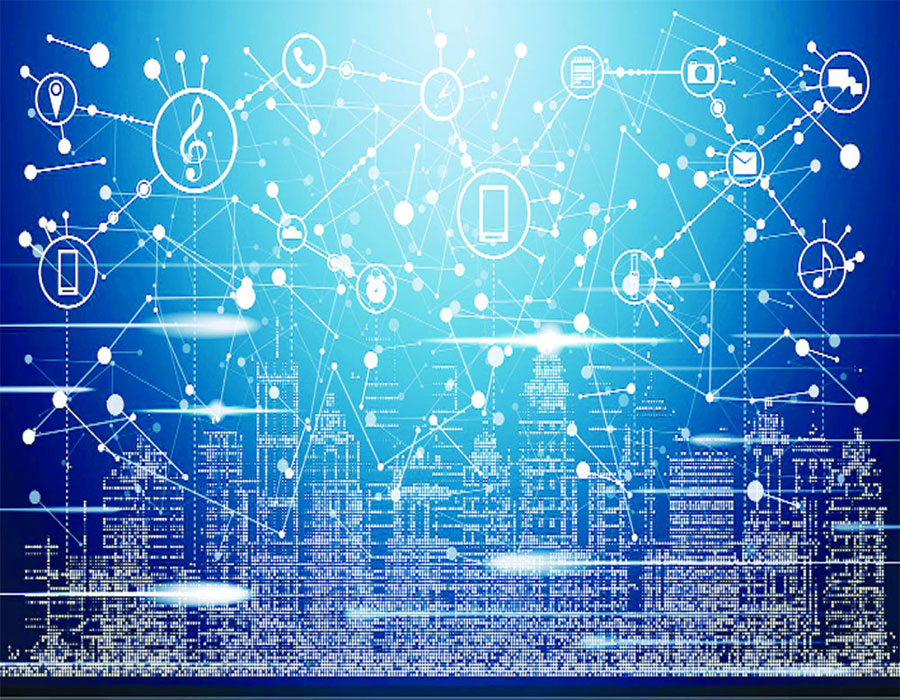
Shape the future at cyber speed
by Alok Ohrie / 23 November 2020Being prepared to weather any storm is possible with the right digital strategy and continuous, concerted effort
The need for businesses to digitally transform themselves is something that has been discussed for years. However, as we saw in the 2018 Digital Transformation Index that serves as a benchmark for computerisation technology adoption among organisations, many enterprises’ digital transformation programmes did not keep up with the advancements in computing power and the influx of emerging technologies. Coupled with the imperative to adapt to today’s unprecedented business disruption, the need to digitally transform has never been more urgent and challenging.
It is encouraging to see that many enterprises are rising to the occasion. In the 2020 Digital Transformation Index, it was found that 95 per cent of respondents in India have successfully accelerated at least some of their transformation programmes this year. This shows immense progress in computerisation. However, there is still a lot of work to be done. As it is, continuous digital transformation is not easy, with 97 per cent of Indian businesses facing entrenched barriers to cyber networked business processes as they navigate their future.
By committing to continual transformation — even amid uncertainty such as the kind the world is facing right now — businesses can help to shape their ideal future. The response to the COVID-19 pandemic has illustrated that organisations can be nimble and transform quickly. A third have already extended their business domain; however, what companies do next will be telling. Ongoing transformation is vital, and there is plenty of room for advancement.
As of now, just 12 per cent of Indian firms surveyed are defined as “Digital Leaders”, meaning these are companies with digital transformation ingrained in the DNA of their business, end-to-end. And even though they are leaders in cyber networked business processes, they recognise that change requires continuous effort — with more “Digital Leaders” accelerating their transformation programmes this year compared to “Digital Laggards”, meaning those that don’t even have a computerisation plan or their investments in such technology are few and far between. Here is some inspiration from more mature digital businesses as they consider how to implement an ongoing advancement plan for their firm:
Data privacy and cybersecurity: These are constant and evolving concerns that should not be overlooked. Mature digital businesses recognise more often than others that data privacy and cybersecurity warrant proper consideration. In fact, 47 per cent Indian businesses are of the opinion that data privacy and cybersecurity are the major barriers in their digital transformation journey.
Budget and resources: Financial constraints — both budget pressures and lack of economic growth — have not slowed down transformation for the more mature digital businesses. They position Information Technology investments as strategic drivers for innovation instead of thinking of them as a cost. However, a whopping 32 per cent Indian respondents said that lack of budget and resources is a barrier to digital progress in their organisation.
Data is the lifeblood of a company: As we move towards a Zettabyte era, the ability to extract insights from data will become a major stumbling block if it is left unresolved. There is hope that the recent disruption will ignite a new wave of data-first, data-anywhere businesses. We found that 94 per cent of Indian organisations agree that extracting valuable insights from data will be more important for their business than ever before as one of the great benefits of this is the ability to track metrics and analyse them. Using these insights allows firms to optimise their strategies and processes for better results. In businesses, two things matter more than most — costs and revenue. It’s possible to make massive changes to both by integrating data-based insights into the company culture. However, working towards this change sooner rather than later is imperative.
Overall, businesses should be applauded for adapting so quickly to the extreme and sudden onset of disruption from recent events. Some companies were poised to respond better than others, based on where they were on their digital journey. However, being prepared to weather any storm is possible with the right digital strategy and continuous, concerted effort.
In this hyper-connected data decade, every business needs to be a cyber business to survive and thrive. With digital disruptors snapping at the heels of many sectors, success will come to the organisations that ensure their workforce is skilled in the best practices of the digital age. Moreover, this change must be woven into the DNA of the firm and championed by its leadership to have a maximum impact. With a strong ally by your side, businesses of varying sizes, industries and digital maturities can find ways to adapt to new routines and push the frontiers of what’s possible.
(The writer is president and MD, Dell Technologies, India)
FREE Download
OPINION EXPRESS MAGAZINE
Offer of the Month






